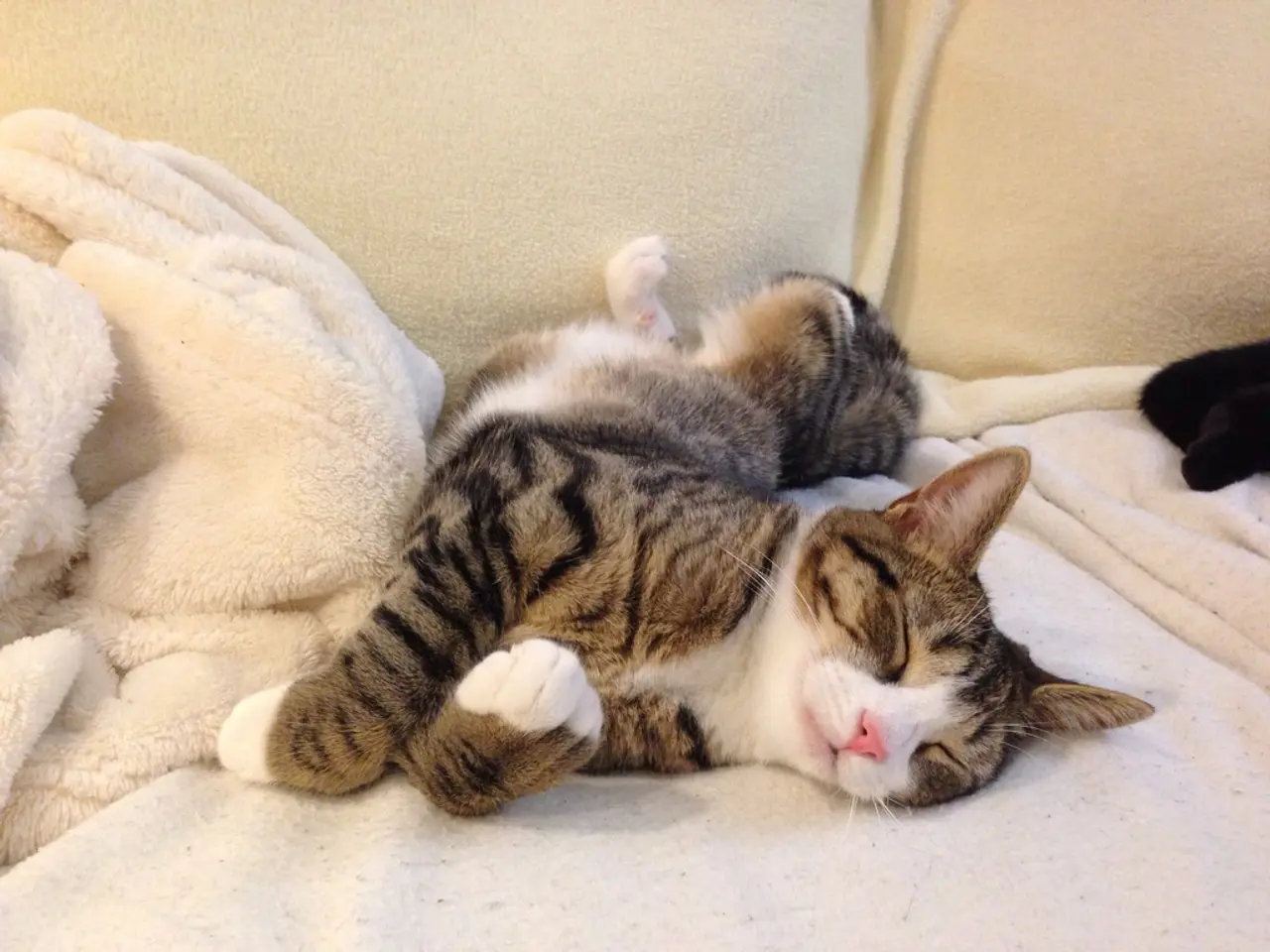Investigating Feline Footage: Scientists Examine Cat Videos for Analysis - Researchers examine popular cat video content
In an intriguing research project, neuroscientists at Ruhr University Bochum in Germany are delving into the world of feline behaviour, aiming to unravel the mysteries of cat body language and draw conclusions about brain processes from their actions.
The study, spearheaded by behavioural neuroscientist Onur Güntürkün, has already garnered international participation, with contributions from researchers in Turkey, Italy, and Canada. One aspect of the research involves analysing the sleeping positions of cats, with a focus on understanding the implications of their preferred side.
In a preliminary investigation, the team analysed 408 publicly available YouTube videos of sleeping cats and found that approximately two-thirds of the cats preferred sleeping on their left side. This left-sided sleeping preference might be linked to evolutionary survival strategies, as sleeping on the left side allows cats to perceive their surroundings through their left visual field, which is processed by the right hemisphere of the brain. This brain region is responsible for spatial attention and threat detection, potentially enabling quicker reactions to predators upon waking.
To ensure the accuracy of their findings, the researchers excluded videos that were altered, such as flipped or mirrored ones, and only included videos where the cat’s full body was visible and the cat had been continuously sleeping for at least 10 seconds. The findings suggest that this left-sided sleeping preference could be an adaptive behavior driven by hemispheric asymmetries related to threat processing. However, the researchers acknowledge that other factors might also influence this behavior, and they encourage further research in this area.
The study is not limited to sleeping positions. The researchers are also investigating a cat's paw preference and tail position. They have noticed that most cats sleep on their left side, but they aim to test this hypothesis more precisely. To gather data, the research team is inviting cat owners to participate by filming their pets using smartphones in three different situations: sleep position, paw preference, and tail position.
Over 500 cat owners have already registered to participate in the study in Germany. This citizen science approach, where laypeople are guided by scientists to collect data, could provide valuable insights into cat behaviour and brain processes.
While some cats may not be encouraged to participate in the experiment, these observations could also offer insights into why certain cats may not exhibit the same behaviours as others. Understanding these differences could lead to a better understanding of individual cat personalities and preferences.
References: [1] Current Biology, Sleeping on the left side: lateralization in cats [2] Ruhr University Bochum, Neuroscientists study cat behavior for brain research [3] The Guardian, Ruhr University Bochum study reveals cats prefer to sleep on their left side [4] BBC News, Cat sleep study reveals preference for left side
- This citizen science project, which invites cat owners to contribute data, aligns with the university's community policy, encouraging public participation in scientific studies.
- In addition to physical behavior, the health-and-wellness aspect of cats is also being addressed in this research, with a focus on mental health considerations, as the team investigates the implications of cat sleeping positions on threat detection and brain processes.




